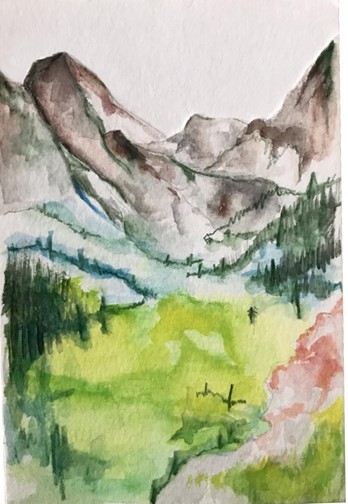Visualizing marine affairs: SMEA students share their ocean art
Typically in STEM fields, research is published behind paywalls in scientific journals that require subscriptions for access. When articles are open-access, the bigger picture can become lost behind jargon and data-heavy explanations written for those with previous background knowledge on the subject. Without an effort by the authors to communicate their findings outside of their published articles, that work often remains inaccessible to the general public.
Scientists have increasingly recognized the responsibility to communicate their science. Many see science communication as critical now more than ever, especially in the age of misinformation campaigns on everything from climate change to COVID-19. The main avenues frequently associated with sharing scientific information with the public are through written communication, such as popular science articles or blog posts, and oral communication, like podcasts or docents at your local science center. In addition to these mediums, art-based practices also provide an opportunity for public engagement.
Art can create channels to communicate scientific knowledge in ways that are accessible to a variety of audiences. Scientific art portrays and distills scientific information visually, providing the opportunity for new perspectives on the environment. Collaborations between scientists and artists can create cultural connections that help communicate science in a way that engages broad audiences. From elaborate oil paintings to short cinematic pieces, art can be a powerful medium that evokes empathy, facilitates public awareness, and empowers people to take action.
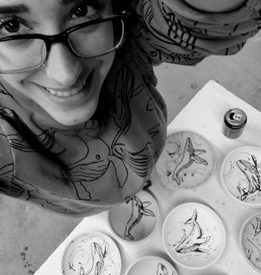
Using art to communicate natural processes is not a new concept. Throughout history, artists have drawn inspiration from the natural world and used their work to describe new environments, species, and natural processes previously unknown. The use of art has only expanded since then, and recently, a growing group of artists identify as art activists and use their work to raise awareness of the human impacts on marine environments. For example, The Washed Ashore Project uses marine debris to create sculptures of marine life to illustrate the impacts of plastic pollution in our oceans.
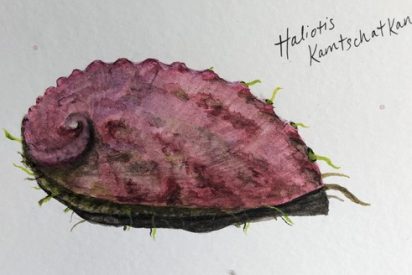
It has become easier to access information as we become more connected online. Social media platforms, like Twitter’s ‘Scientists Who Art+Craft’ page, make sharing work even more attainable. Art and science are creative endeavors, and that synergy provides an opportunity to blend work to garner understanding about the environment.
In the midst of developing my thesis, I found it difficult to explain my work to my family in a relatable way, without all the scientific terminology and data. I realized I needed to figure out how to share what I was doing with an audience beyond my professors and fellow students, so I turned to art. Marine and environmental affairs lies at the intersection of the natural sciences, social sciences, and humanities. Students at SMEA have a wide range of interests and many enjoy communicating science and connecting with nature through art. After reading 2015 SMEA graduate Michael Chang’s thesis on communicating environmental science through art, I asked current SMEA students how they bridge marine affairs and art in their own work.
Danny Kosiba, first-year student
Not everyone has the resources or opportunity to see some of the ocean’s most charismatic and awe-inspiring animals and landscapes. With photography, we have the chance not only to help people take a peek at these wonderful things but also to share their importance more broadly. These connections are critical to telling the story of the world’s oceans and why we must protect them for humpbacks and humans alike.
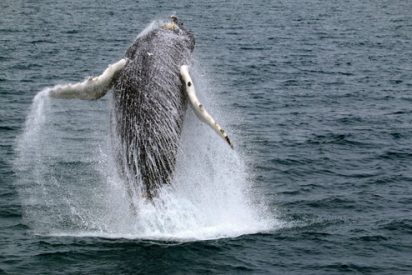
Devon Lombard-Henley, second-year student
I’ve done a lot of marine-themed art (paintings, drawings, knitted toys, logos, even art on the back of a boat) and have found that it opens up communication in a way that non-visual elements rarely can. Art is approachable and helps get conversations started that link the scientific community with groups it might not normally reach so easily.
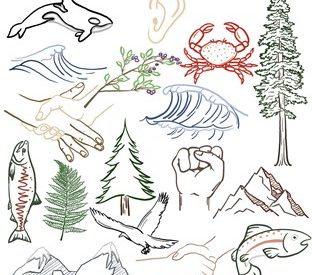
Kathryn Husiak, first-year student
I love the mindfulness of embroidering, and when my work is complete, I can reflect on the details of each step. Often I find myself focusing on the negative aspects of human impact on the world, and these embroideries help me appreciate the beauty and connection of it all. I was very excited to embroider this piece because it is a scientific diagram that I learned early in my marine science education. I loved the idea that I could replicate this diagram in my own artistic manner while retaining the information it conveys.
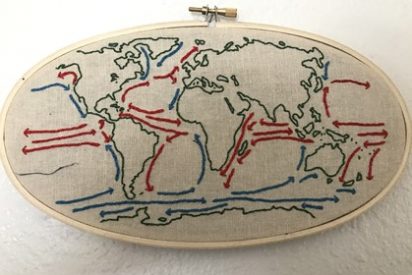
Darby Swayne, second-year student
I use art to communicate environmental science because it evokes more emotion and reaches a larger audience than most peer-reviewed papers. The average person may not have access to the information and facts that support and inspire environmental art, but they can view and be affected by pieces that display that information visually.
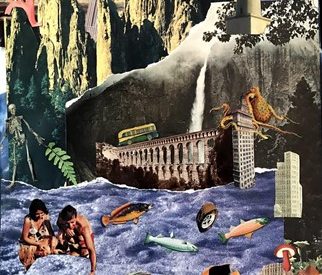
Olivia Zimmerman, second-year student
I always feel a great deal of both peace and inspiration in nature. Drawing landscapes, plants, and wildlife help me feel connected to those places when I cannot be physically in them and remind me how important it is to work towards their protection and restoration. I think art can be a very powerful science communication tool.
